Posts Tagged ‘Retail’
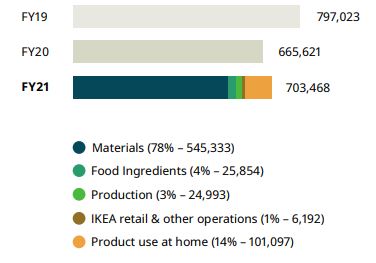
IKEA Corporate Social Responsibility (CSR) efforts are led by Chief Sustainability Officer, Lena Pripp-Kovac. Furthermore, retail managers at every country are also Corporate Sustainability Officers (CSO). The home improvement and furnishing chain started to research CSR reports under the title People & Planet Positive starting from 2012. IKEA CSR efforts and activities comprise supporting local communities, educating and empowering workers and addressing the issues of gender equality and minorities within the company. Moreover, the global furniture retailer works to reduce its energy consumption and derive energy from alternative sources. Sustainable sourcing represents an additional CSR issue that IKEA aims to address within the scope of its operations. CSR Programs and Initiatives IKEA Supporting Local Communities IKEA Group operates 422 stores in 50 markets around the world.[1] The home improvement and furnishing chain aims to cause positive impact on local communities, where its stores are located. Packing event organized by all IKEA stores in Sweden involved customers and representatives from Save the Children to prepare more than 37,000 welcome backpacks filled with toys and other products for children In UK, IKEA has planted one million trees in communities across the country In Australia, IKEA Perth and IKEA Adelaide employees contribute to the improvement of the environment in which children live and develop. IKEA Educating and Empowering Workers Starting from January 2015, IKEA has introduced a new hourly wage structure that concentrates on the needs of its employees, rather than market standards. The furniture retailer has launched My Learning online system that provides employees at all levels access to face-t-face and digital learning solutions. Employee Health and Safety at IKEA In 2021, the furniture retailer introduced a common solution for reporting incidents and accidents that’s easily accessible for all co-workers The number of accidents at IKEA was reduced by…
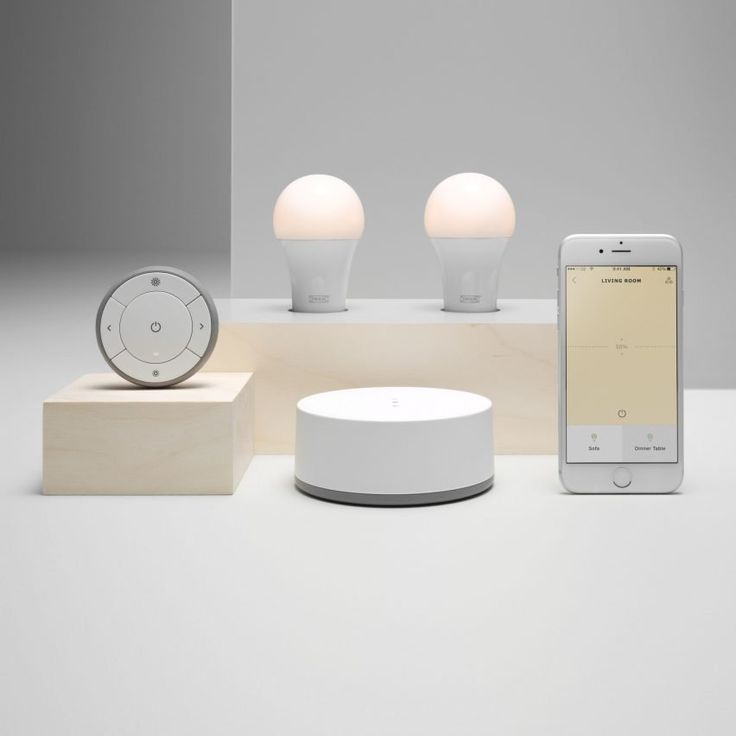
Increasing popularity of ecosystem thinking in business has not gone unnoticed by the Swedish furniture chain as well. Currently, IKEA ecosystem is cantered around the notion of smart home. The Swedish furniture chain is investing in the new unit and expanding the range of products “which currently includes smart light bulbs, smart plugs, and other connected devices to automate home control.”[1] Named as Home Smart, the new full-fledged business unit is dedicated to smart home products. In other words, increasing numbers of smart home devices are being added into IKEA ecosystem. It can be forecasted that IKEA ecosystem is going to be aggressively expanded with hardware products that can be effectively paired with smart home technologies such as Google’s Nest and Amazon’s Alexa. James F. Moore, economist who coined the term business ecosystem defines the following four evolutionary stages of business ecosystem: birth, expansion, leadership and self-renewal. The evolution of IKEA ecosystem according to this concept is taking place in the following manner: 1. Birth. The world’s largest furniture retailer has already identified smart homes as the basis of its ecosystem. The choice of smart home as a basis of ecosystem is strategically appropriate taking into account increasing integration of internet into various aspects of daily life and chores. 2. Expansion. The company has developed a wide range of innovative products such as Symfonisk WiFi bookshelf speakers and lamps, Riggard LED lamp with wireless charging, Tradfi remote control and others that are considered as smart home products. Furthermore, the latest IKEA additions to smart home concept include electric blinds that go up and down at pre-programmed times and smart air purifiers. 3. Leadership. The furniture retailer is communicating its vision to internal and external stakeholders to strengthen its leadership position in home improvement industry with the focus on innovative products.…
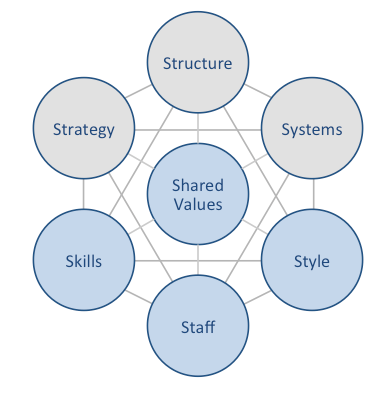
IKEA McKinsey 7S model explains how individual elements of businesses can be aligned to increase the overall effectiveness. McKinsey 7S framework considers strategy, structure and systems as hard elements, whereas shared values, skills, style and staff are accepted as soft elements. The framework stresses the presence of strong links between elements in a way that a change in one element causes changes in others. As it is illustrated in figure below, shared values represent the core of IKEA McKinsey 7S framework. This is because shared values guide employee behaviour with effects on their performance and ultimately on the bottom line for the business. McKinsey 7S model Hard Elements in IKEA 7S Model Strategy IKEA business strategy is based on the IKEA Concept, which is built upon the combination of function, quality, design and value – always with sustainability in mind. Moreover, the Swedish furniture chain offers cost advantage value for customers. Accordingly, IKEA business strategy involves offering increasing variety of products for the lowest prices. Regular engagement in new market development and benefiting from strategic alliances constitute additional pillars of IKEA business strategy. Structure IKEA organizational structure is unique and highly complex. The home improvement and furnishing chain maintains uniqueness and complexity its corporate structure in order to pay less taxes. The company can be divided into three large groups: franchise, range and supply and industry. Large scale of the business that integrates 11 franchisees operating in more than 500 locations in 63 countries[1] necessitates hierarchical organizational structure. Nevertheless, the Swedish furniture chain has proved to be successful in overcoming common weaknesses of hierarchical organizational structure such as high level of bureaucracy and lack of flexibility of the business. Systems IKEA business relies on a set of systems. These include employee recruitment and selection system, team development and orientation…
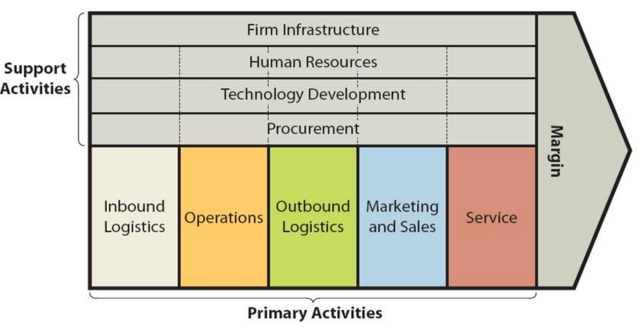
IKEA value-chain analysis is an analytical framework that assists in identifying business activities that can create value and competitive advantage to the global furniture retailer. “Each step in the manufacture of a product or the delivery of a service can be thought of as a link in a chain that adds value to the product or service. This concept of how business fulfils its mission and objectives is known as the value chain”[1]. Figure below illustrates the essence of IKEA value chain analysis. IKEA Value Chain Analysis IKEA Primary Activities IKEA Inbound logistics Inbound logistics for IKEA is associated with purchasing raw materials and ready items from about 1220 suppliers located in more than 55 countries worldwide.[2] The majority of IKEA products (89%) are sourced from external suppliers across the globe.[3] The world’s largest furniture retailer conducts purchasing via its 31 trading service offices in 26 countries. The top five purchasing countries for The Swedish furniture chain include China 20%, Poland 18%, Italy 8%, Germany 6% and Sweden 5%.[4] IKEA inbound logistics is a major source of value creation for the business. Specifically, the proximity of company’s 31 trading service offices to supplier locations helps to ensure that company can monitor production, test new ideas, negotiate prices and check quality of products and raw materials they are buying. Economies of scale are another factor that decreases the prices of inbound logistics for the furniture retailer. Moreover, flat pack Do-It-Yourself assembly principle for many IKEA products lowers the cost of packaging and makes inbound logistics easier to facilitate. The world’s largest furniture retailer maintains strategic relationships with its suppliers. The average length of supplier relationship is 11 years[5], with some suppliers working with IKEA for several decades. IKEA Operations IKEA operations are divided into three divisions – Franchise, Property and…
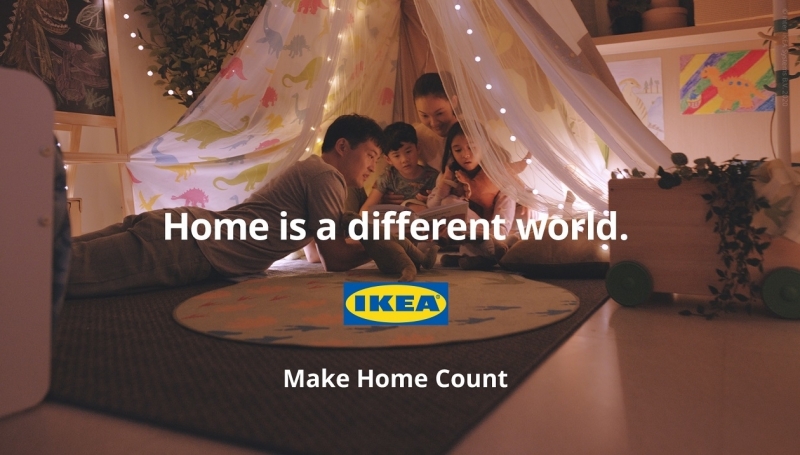
IKEA marketing communication mix integrates the application of individual marketing communication channels such as print and media advertising, sales promotions, events and experiences, public relations and direct marketing. The extent and patterns of usage of these marketing communication channels by the furniture retailer is discussed below. IKEA Print and Media Advertising IKEA relies on print and media advertising as one of its main marketing strategies to deliver its marketing message to the target customer segment. The company collaborates with a range of popular journals, magazines and TV channels globally for this purpose. The home improvement and furnishing chain has effectively integrated the elements of creativity in its print and media advertising a number of times. For example, billboard-fitted wardrobes were placed by IKEA in selected outdoor locations in Vienna. People passing by were encouraged to slide its door open to assess IKEA’s solutions to fit many items into the wardrobe.[1] In another instance, the Swedish furniture chain developed a print ad that is designed to put customers to sleep. Specifically, ‘Somnig’ is printed with lavender ink and emits white noise through a speaker. Customers are encouraged to tear it out of IKEA magazine and place next to their bed to have a good night’s sleep.[2] Another noteworthy instance of application of creativity in print advertising by IKEA relates to the publication of its more than 200 million catalogues in 2013. While more than two third of IKEA’s marketing budget was previously spent on furnishing living quarters for its catalogues, from 2013 onwards the company started to create images in its catalogue with the help of graphic artists. In other words, starting from 2013 images in IKEA catalogues are not photos but “a collection of pixels and polygons arranged on a computer”[3] and this shift has proved to be…
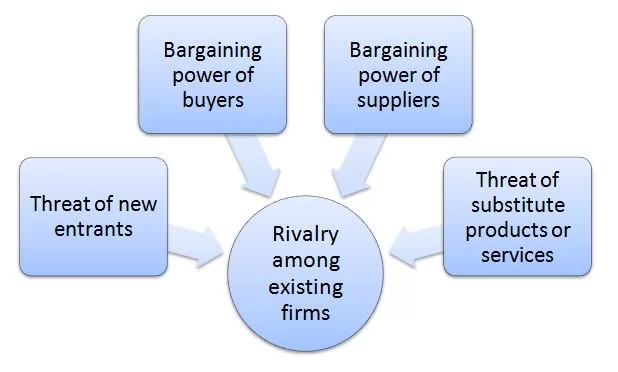
Porter’s Five Forces model is “a generic framework that deconstructs industry structure into five underlying competitive forces or variables”[1]. IKEA Porter’s Five Forces are represented in figure below: Porter’s Five Forces Threat of new entrants in Porter’s Five Forces Analysis Threat of new entrants to furniture and home appliances manufacturing industry in general is significant. The following set of factors, among others affects the intensity of threat of new entrants into the industry. 1. Lack of regulatory or technological entry barriers. There are no legal or regulatory barriers to enter the furniture industry. Moreover, knowledge barriers are not substantial as well because furniture producing processes do not involve advanced know-how that is difficult to replicate. 2. Economies of scale. IKEA benefits from the economies of scale to a great extent internationally and this advantage allows the Swedish furniture chain to maintain highly competitive prices. No new market entrant would be able to utilize economies of scale to IKEA’s extent and thus, competing with IKEA on price level remains as a highly challenging, if not impossible task. Such a situation discourages potential new players to enter the industry. 3. Distribution channel barriers. Although there are no regulatory or technological entry barriers as discussed above, distribution channel entry barrier exists. It took more than seven decades for the Swedish furniture chain to establish its global distribution network that comprises more than 500 locations in 63 countries. Without such an extensive distribution network it will be hard for new market entrants to present any real threat for IKEA. Bargaining power of buyers in Porter’s Five Forces Analysis Bargaining power of buyers in furniture and home appliances manufacturing industry is huge. The following factors increase buyer bargaining power: 1. Absence of switching costs for customers. Currently IKEA lacks an ecosystem of products…
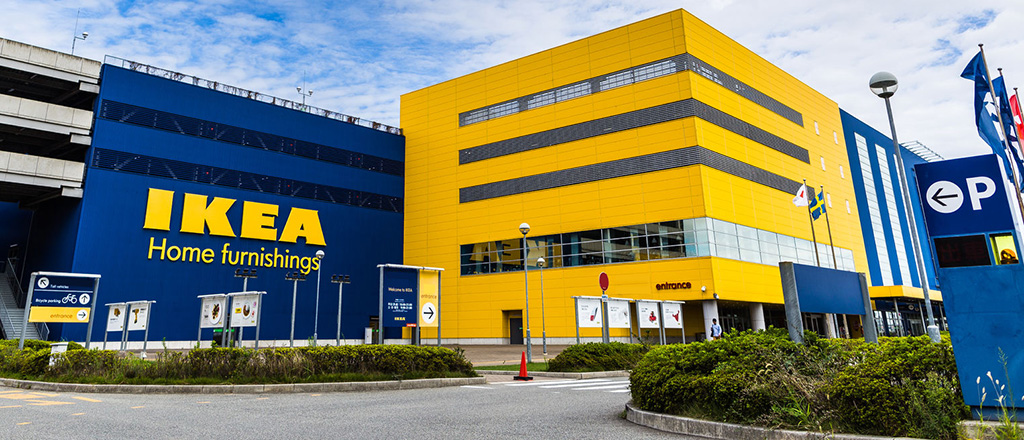
IKEA segmentation, targeting and positioning involves a set of consequent marketing decisions that constitute the core of company’s marketing strategy. Segmentation refers to dividing population into groups on the basis of their common traits and characteristics. Targeting involves choosing specific groups identified as a result of segmentation as consumers for the brand. Positioning implies the selection of the marketing mix the most attractive to the target customer segment. There are various types of positioning such as mono-segment, multi-segment, standby, anticipatory, imitative, adaptive, defensive and stop-gap types of positioning. IKEA uses the following types of product positioning: – Mono-segment positioning. This type of positioning is associated with making an appeal to the needs and wants of a single customer segment. IKEA uses mono-segment positioning via focusing on a single customer segment that are cost-conscious and prefers to get value for money. – Adaptive positioning. This positioning method is based on periodically repositioning products and services to reflect changes in customer preferences. The Swedish furniture chain takes into account dynamic nature of customer preferences in designing its products. For example, increasing popularity of minimalism in the global scale has been reflected in the latest ranges of IKEA products. – Aesthetic positioning. The world’s largest furniture retailer uses ‘democratic design’ concept to develop its products. Democratic design appeals to the needs and preferences of a specific customer segment that value balance between function, form, quality, sustainability and low price. The following Table illustrates IKEA segmentation, targeting and positioning: Type of segmentation Segmentation criteria IKEA target customer segment Geographic Region Europe, Americas, Asia & Australia, Russia. In total 11 franchisees operate in more than 500 locations Density Urban Demographic Age 18 and older Gender Males & Females Life-cycle stage Bachelor Stage young, single people not living at home Newly Married Couples young, no…
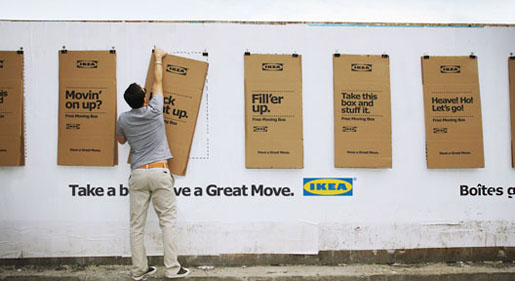
IKEA 7Ps of marketing comprises elements of the marketing mix that consists of product, place, price, promotion, process, people and physical evidence. The furniture retailer places greater emphasis on the price element of the marketing mix over other elements due to cost advantage business strategy it pursues. Product Element in IKEA Marketing Mix There are nearly 12000 products across IKEA range and the company renews its product range annually. The company develops approximately 2000 new products each year. IKEA products are designed by its in-house, as well as, contracted designers. IKEA promotes the idea of democratic design. The furniture maker adheres to the following five dimensions of democratic design: form, quality, function, sustainability and low price. IKEA products are associated with no-frills simplicity to sustain its cost leadership business strategy. Furthermore, some of IKEA products such as furniture are not assembled and ready to use by customer. Instead, the retail giant prefers to sell large furniture items as flat pack and customers have to assemble furniture themselves according to clear guidelines and illustrative instructions supplied by the company. Selling products in flat pack form immensely contributes to cost leadership business strategy because it is much cheaper to transport and store flat packs than ready assembled items. Place Element in IKEA 7Ps of Marketing IKEA has 11 franchisees operating in more than 500 locations in 63 countries.[1] The Swedish furniture chain promotes itself as a multi-channel retailer effectively integrating online and offline sales channels. Currently IKEA is concentrating on smaller city-centre stores and planning studios for kitchens, as the world’s largest furniture retailer tries to decrease its dependence on selling only through giant out-of-town warehouses. Price Element in IKEA Marketing Mix IKEA pricing strategy integrates the following: 1. Cost leadership. Competitive costs are placed at the core of…
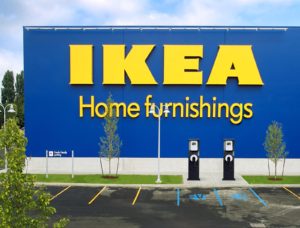
IKEA marketing strategy is based on sophisticated customer research and market research. “IKEA actually sends design experts into people’s homes to listen to their concerns and provide feedback. This allows IKEA evangelists to make marketing decisions based on people’s real-life experiences rather than just surveys or data.”[1] Accordingly, it can be argued that marketing strategy of IKEA is proactive, rather than reactive. In 2018, the world’s largest furniture retailer shifted its marketing focus from rooms to product innovation. The ‘magic’ blue bag has been placed at the core of marketing strategy of IKEA and the latest ads have been designed to illustrate how the addition of just a few innovative items can transform the home for the better. Generally, IKEA marketing strategy integrates the following: 1. Focusing on product and price elements of the marketing mix. Specifically, IKEA attempts to offer the greatest range of products for the lowest cost. Economies of scale play an instrumental role in achieving competitive prices. The Swedish furniture chain offers mixed-and-matchedproducts accommodating unique style and needs of each customer. Reusable durability is another important feature of IKEA products. Along with product and price, additional elements of marketing mix, also known as 7Ps of marketing include place, promotion, process, people and physical evidence. 2. Using mono-segment, adaptive and aesthetic types of product positioning. The furniture retailer targets cost-conscious customer segment that prefers to get value for money they pay. Accordingly, IKEA has adapted the lowest costs of its products along with the widest range as the unique selling proposition of the brand. The home improvement and furnishing chain continually adapts its products to changing customer needs and wants on the basis of its proven ‘democratic design’ concept. 3. Integrating several channels of marketing communication such as print and media advertising, sales promotions, events and experiences,…
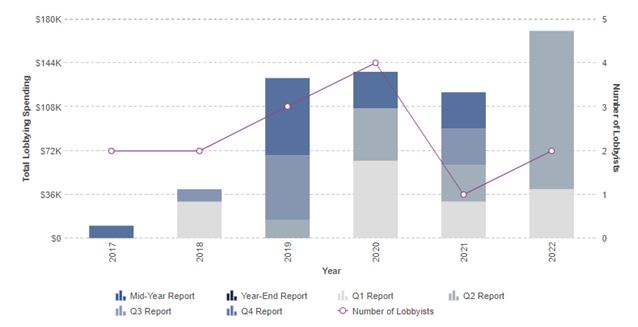
PESTEL is a strategic analytical tool used to assess the impact of external factors on businesses. The acronym stands for political, economic, social, technological, environmental and legal factors affecting businesses. It is important to clarify that businesses have little and no influence over factors within PESTEL framework; however they can develop strategies to eliminate or at least to minimize negative effects of these factors. IKEA PESTEL analysis can shed a light into opportunities to strengthen competitive advantage of the business in various fronts. Political Factors in IKEA PESTEL Analysis IKEA revenue is subject to political situation in the market and a wide range of political factors such as government attitude towards the brand and political stability. Other political factors that can affect IKEA’s business include the level of bureaucracy, degree of corruption, home market lobbying and import restrictions in markets where the global furniture retailer operates. Use of Prison Labour in East Germany The company has been involved in a series of issues on political grounds. In 2012, IKEA had to admit that the company used prison labour in East Germany in 1970s and 1980s to produce its products. It has to be specified that the use of prison labour took place at manufacturing sites of IKEA suppliers, not the sites managed by the retail giant itself. An independent report by Ernst and Young concluded that while IKEA had a policy of visiting production facilities to control working processes, access to East German suppliers had been restricted. Although IKEA offered formal public apology to those affected, the incident caused a significant political controversy around the globe.[1] Moreover, allegations that IKEA founder Ingvar Kamprad was an active recruiter for Swedish Nazi group has sparked controversy with negative effects on the brand image.[2] Symbolic Role of Doll Lufsig Another…
